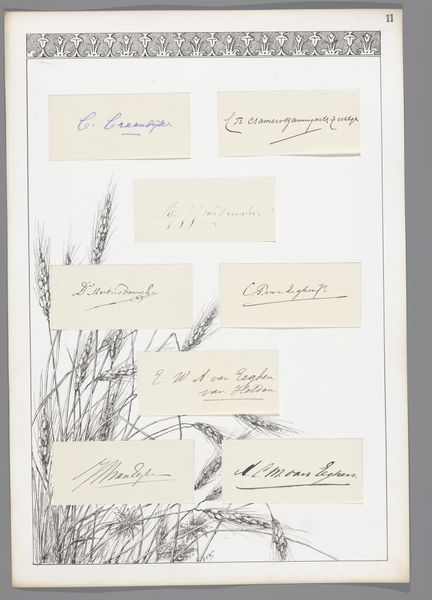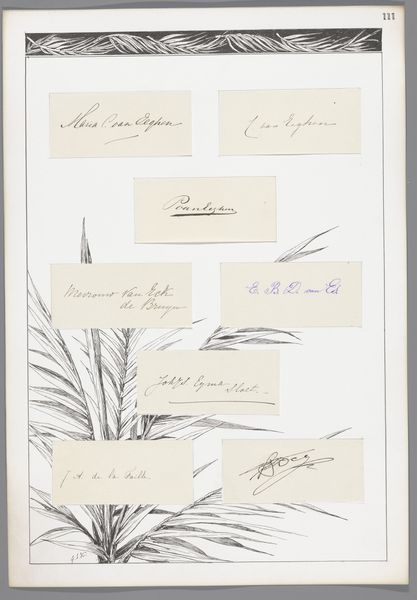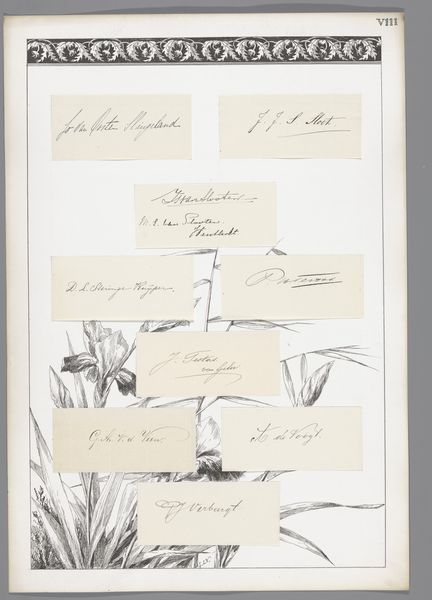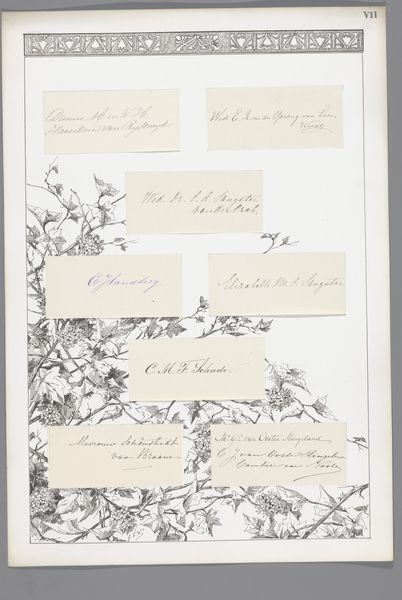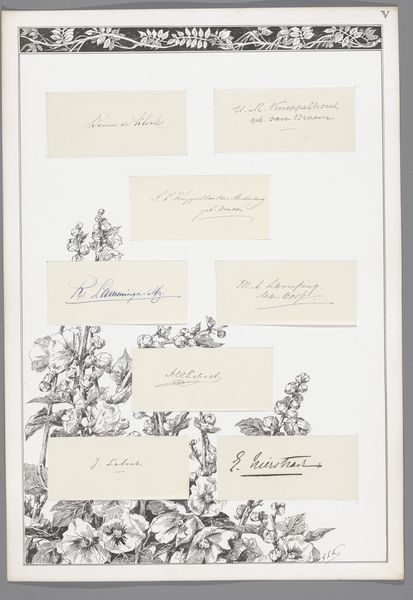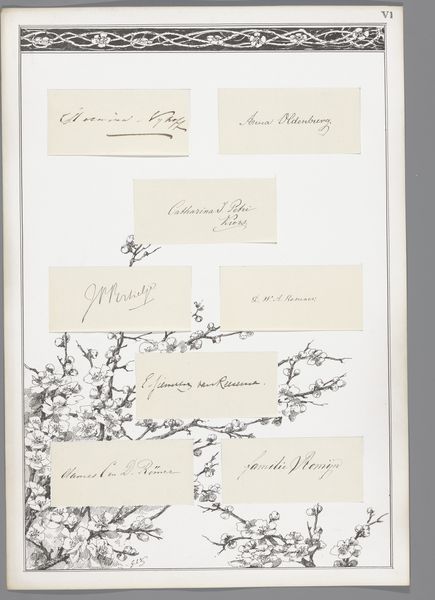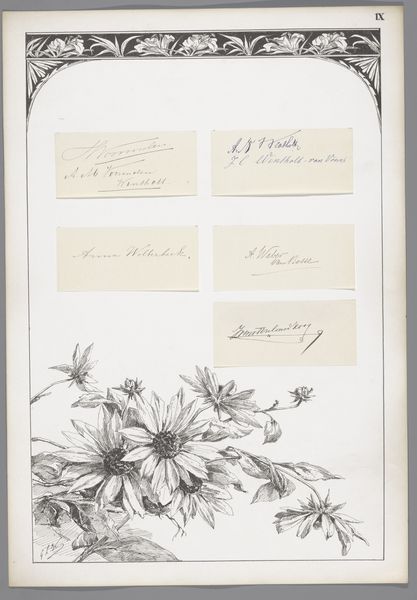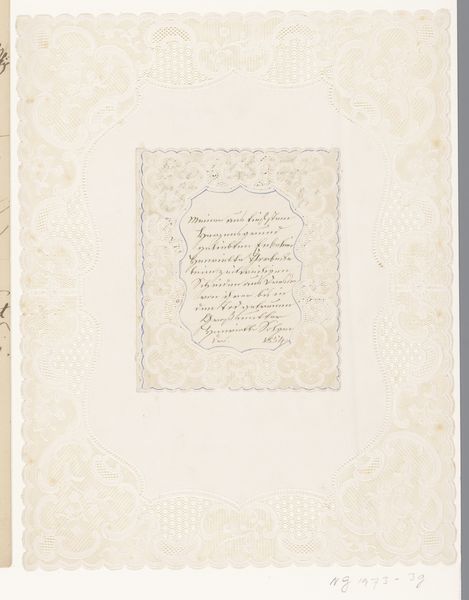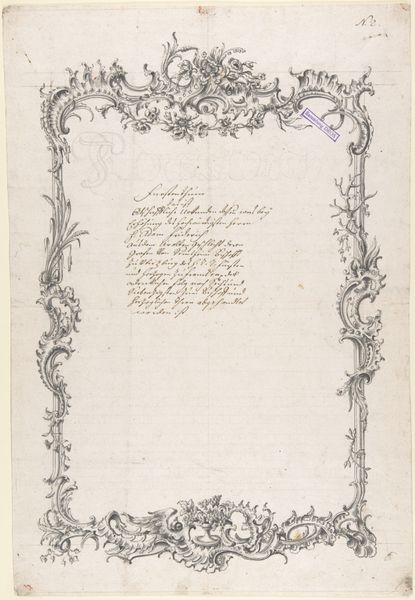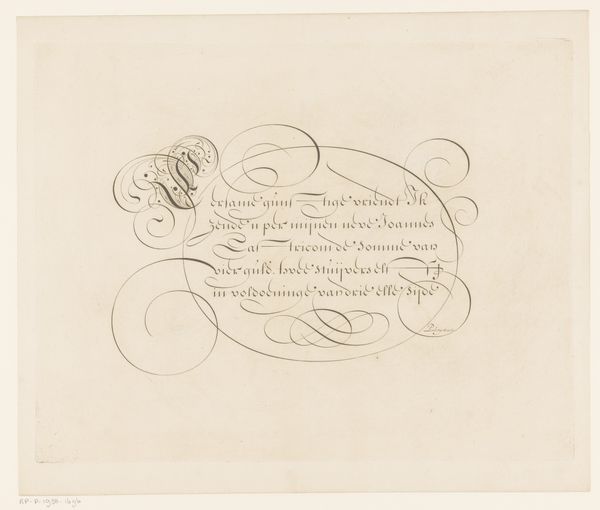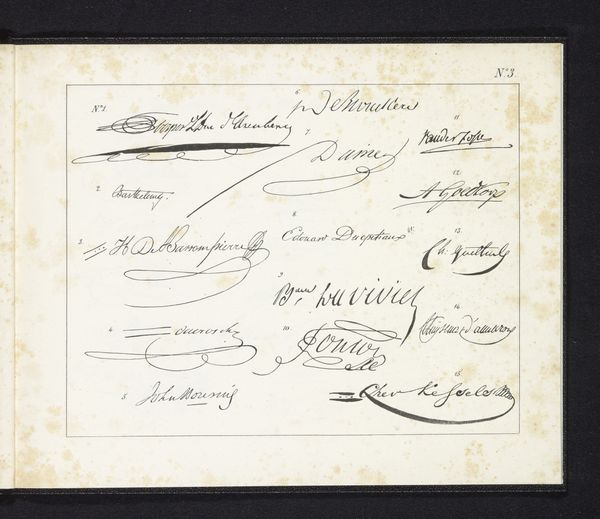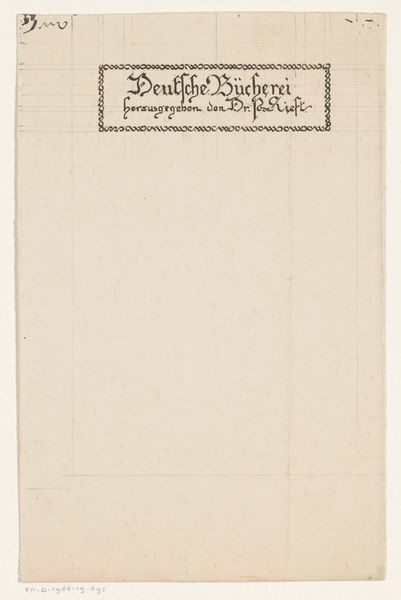
Acht handtekeningen geplakt op een blad met sneeuwklokjes en decoratieve rand 1904
0:00
0:00
drawing, paper, ink, pencil
#
drawing
#
comic strip sketch
#
art-nouveau
#
pale palette
#
sketch book
#
flower
#
personal journal design
#
paper
#
personal sketchbook
#
ink
#
sketchwork
#
pencil
#
line
#
sketchbook drawing
#
storyboard and sketchbook work
#
fashion sketch
#
sketchbook art
Dimensions: height 451 mm, width 313 mm
Copyright: Rijks Museum: Open Domain
Editor: Here we have "Eight Signatures Pasted on a Sheet with Snowdrops and Decorative Border," a drawing by George Lourens Kiers from 1904. It's done with pencil and ink on paper and what strikes me most is the almost scientific way that Kiers combines naturalistic botanical illustrations with the formality of handwritten signatures. How do you interpret this work? Curator: This combination sparks so many questions about class, labor, and representation! Consider the Art Nouveau context, often associated with decorative arts and a burgeoning middle class. The signatures, carefully placed as if specimens, act as symbols of individual identity and perhaps aspiration. Do you see how the snowdrops, symbols of hope and rebirth, frame those ambitions? Editor: I do, it's almost like they are rising out of the flowers, supported by them. So you see it as Kiers commenting on the social climb? Curator: Potentially. Who were these individuals signing? What were their roles in society? Were they artists, patrons, or members of a particular social circle? We need to remember that art isn’t created in a vacuum. These elegant snowdrops contrast to the stark realities of labor for many during this period. How does knowing this change your reading of the artwork? Editor: It complicates the beauty for sure! It makes me wonder if Kiers was making a point about whose "signatures" or voices, are given space and importance versus those that are marginalized. The snowdrops might symbolize something a bit more biting. Curator: Precisely! By juxtaposing these elements, Kiers may be prompting us to examine the power dynamics inherent in representation, asking us to think critically about who gets remembered and why. Editor: That's a fascinating perspective. I hadn't considered the piece in terms of social commentary. It makes you look at the piece through a different lens, wondering about those stories. Curator: Exactly! That's why interrogating the historical and social contexts is so essential; art holds up a mirror to society and invites us to reflect.
Comments
No comments
Be the first to comment and join the conversation on the ultimate creative platform.
